Bitcoin's $110,000 defense line has been breached. Is the market about to turn bearish?
- 核心观点:加密市场暴跌后陷入极度恐慌。
- 关键要素:
- 比特币四连跌逼近前低。
- 全网爆仓近12亿美元。
- 美现货ETF持续净流出。
- 市场影响:加剧市场恐慌,或引发更深回调。
- 时效性标注:短期影响。
Original author: 1912212.eth, Foresight News
After the October 11th crash, widespread market concerns about a potential second dip surfaced, and just days later, another plunge struck. Bitcoin, which rebounded from $116,000 on October 17th, experienced four consecutive daily declines. At around 4:00 PM today, it dipped to around $104,500, within striking distance of the October 11th crash low of $102,000. Ether (ETH) was also not immune, plummeting to $3,706, and Sol (SOL) to around $175. A host of altcoins saw widespread declines.
Coinglass data shows that over the past 24 hours, open interest across the entire network has reached $1.189 billion, with $935 million in long positions liquidated. The largest single liquidation occurred on Hyperliquid's ETH-USD exchange, valued at $20.4274 million. Alternative data shows that the market panic index has fallen to 22, indicating extreme panic.
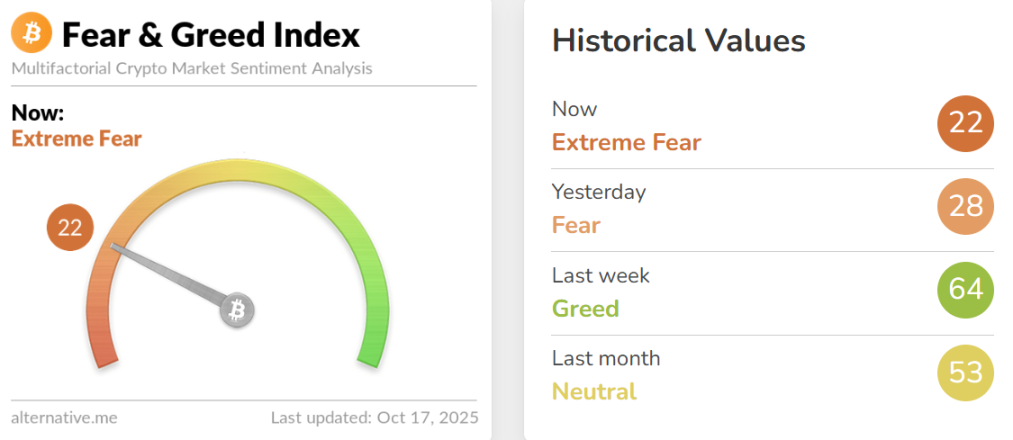
US BTC and ETH spot ETFs both saw significant net outflows
Since the crash, US BTC spot ETFs have shown significant net outflows. Between October 10 and 16, only October 14th saw a net inflow of $102.58 million, while the rest of the period saw net outflows. On October 1st, net outflows exceeded $536 million, a new low since August.
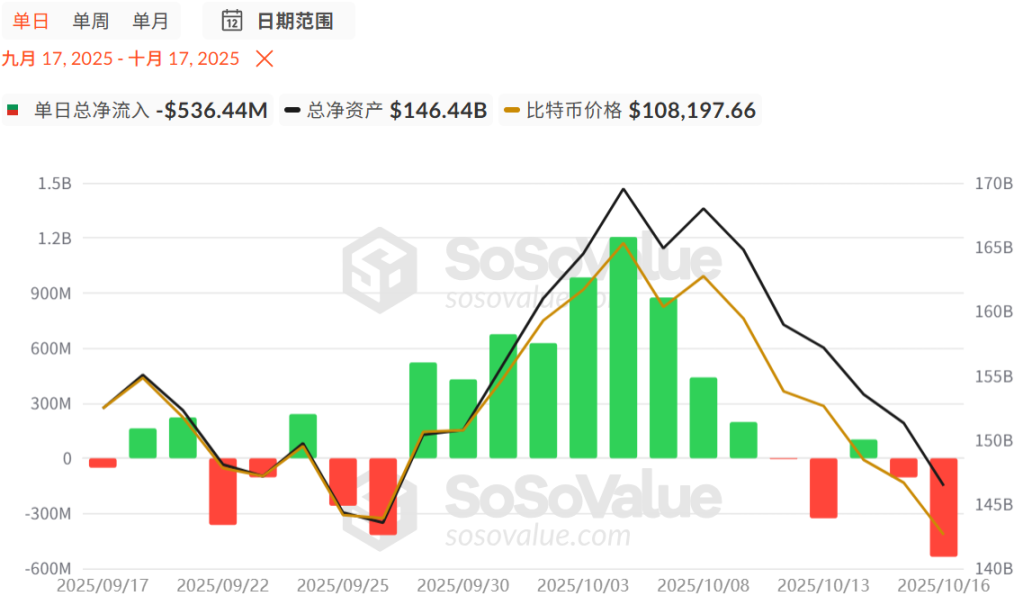
The outlook for Ethereum spot ETFs is also not optimistic, with large net outflows occurring since October 9. On October 13, the net outflow exceeded $428 million, setting a new record for net outflows since September this year.
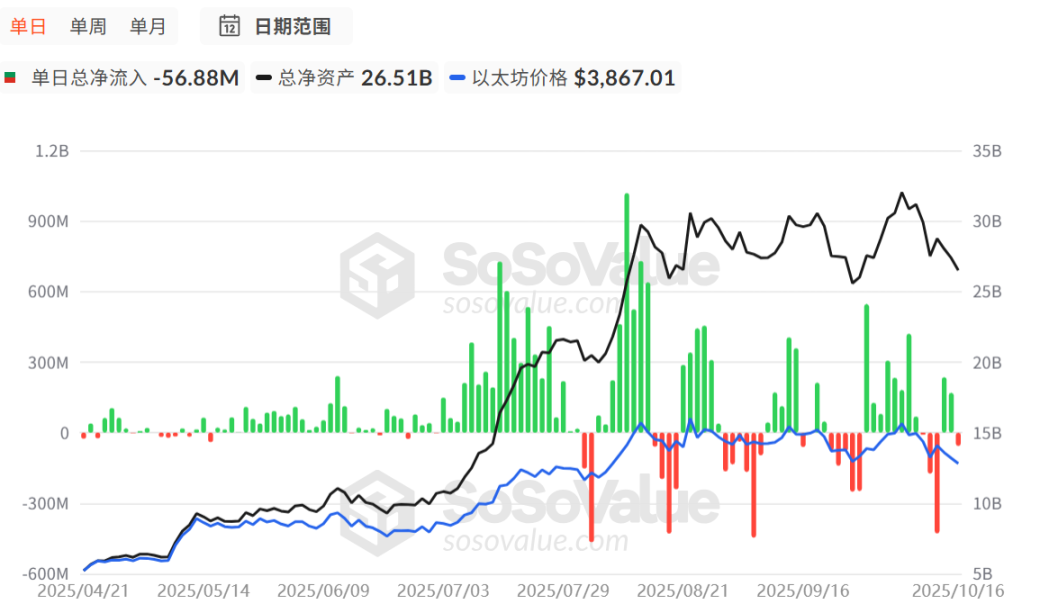
The crash has left market confidence fragile
DeFiance Capital, which had prospered in the previous cycle by betting on multiple DeFi projects, suffered losses in this crash. On October 14th, its founder, Arthur, posted on social media, "We're fine. The fund experienced some losses, but they weren't among our top five biggest profit and loss days. I'm just extremely angry and disappointed. This crash has set the entire crypto space back significantly, especially for the altcoin market, as most price discovery occurs on offshore CEXs."

He even pessimistically believes that the crash marks the end of the encryption era.
The previously popular trend of treasury DATs has also died down. Tom Lee, chairman of BitMine, the largest Ethereum holding company, said the bubble may have burst.
Previously, on September 9, 2025, Nasdaq-listed QMMM Holdings announced plans to invest $100 million in a cryptocurrency reserve, leading to a 9.6-fold increase in its stock price within three weeks. At the end of September, the U.S. Securities and Exchange Commission (SEC) suspended trading of the company, effective September 29, based on allegations that the company was manipulating its stock price through social media platforms. The suspension remains in effect. Caixin visited its Hong Kong headquarters on October 16th and found the office deserted. Upon contacting staff at another nearby company, they stated that the company had relocated in September and were unaware of the relocation.
Changpeng Zhao commented on this, saying, “All crypto treasury (DAT) companies should use third-party crypto custodians and have their accounts audited by investors.”
Small US banks collapse as market sells first
Two regional U.S. banks, Zions Bancorp and Western Alliance Bancorp, disclosed losses Thursday from fraud involving distressed commercial mortgage investment funds. While the losses were relatively small compared to other recent credit defaults, amounting to only tens of millions of dollars, the market reaction was dramatic.
Germany's DAX index fell 2.13%, Britain's FTSE 100 index fell 1.6%, Nikkei 225 index fell 1.44%, Australia's S&P/ASX 200 index fell 0.81%, and all three major U.S. stock index futures fell.
Panic spread quickly, dragging down the entire banking sector, with the total market value of 74 large US banks wiping out more than $100 billion in one day.
This "sell now, see later" mentality quickly spread. JPMorgan analysts Anthony Elian and Michael Pietrini wrote in a report that they also questioned "why all these credit 'isolation' events seem to have occurred in such a short period of time." However, the sell-off did not spare large bank stocks, with shares of Citigroup and Bank of America both falling by more than 3%.
The 2023 US banking crisis also triggered a sharp correction in the crypto market.
Will the market turn bearish in the future?
Chris Burniske, partner at Placeholder VC, wrote, “It increasingly feels like last Friday’s plunge has caused the crypto market to stagnate in the short term. After such a crash, it’s difficult to quickly form sustained buying. This cycle has been disappointing for most people, which may limit their actions because everyone is looking forward to a market recovery or previous historical highs. It’s easy to get caught up in the details of the chart, but if you look at the monthly charts of BTC and ETH, it shows that we are still in the high range (although there are cracks), if you are considering taking profits.
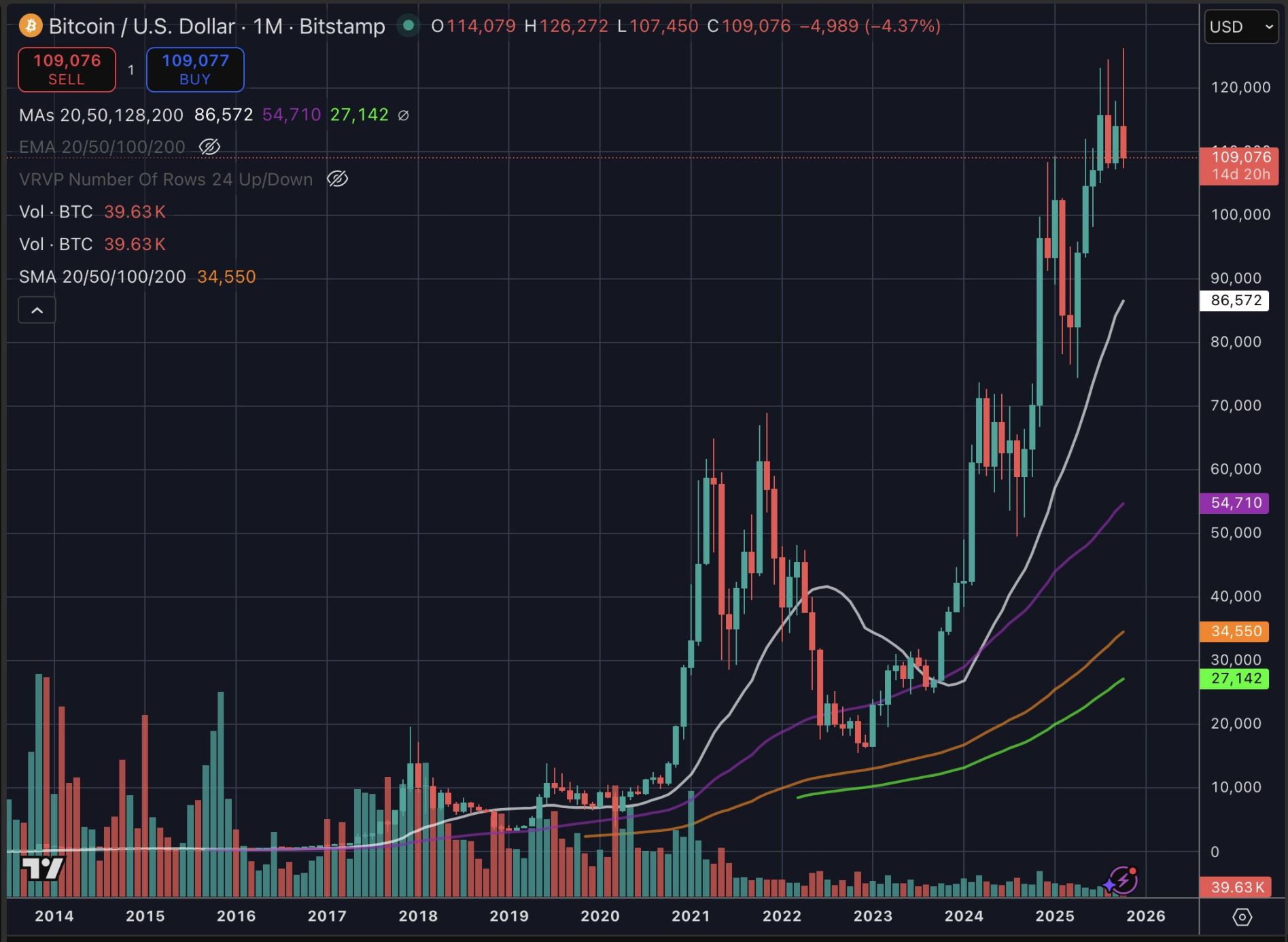
MSTR is falling, gold is warning, as are credit markets, and stocks will be the last to react. We can always get a weak rebound, but I've already taken action (remember, cashing out is never all or nothing). I'll watch how BTC reacts to $100,000, but I might become interested again if it reaches $75,000 or lower. This bull market is different from the last, and the next bear market won't be either."
Arete Capital partner McKenna said the market is in the process of forming a bottom, which takes 40-60 days to establish. All price action within this interval is a volatile washout. "In mid-November, we should begin to expect constructive results and a positive December and first quarter of 2026."
glassnode tweeted that Bitcoin is currently in a key support range, with the price below the 200-day moving average ($107,400) and just above the 365-day moving average ($99,900). At the same time, there is also pressure from the 111-day moving average ($114,700) above it.
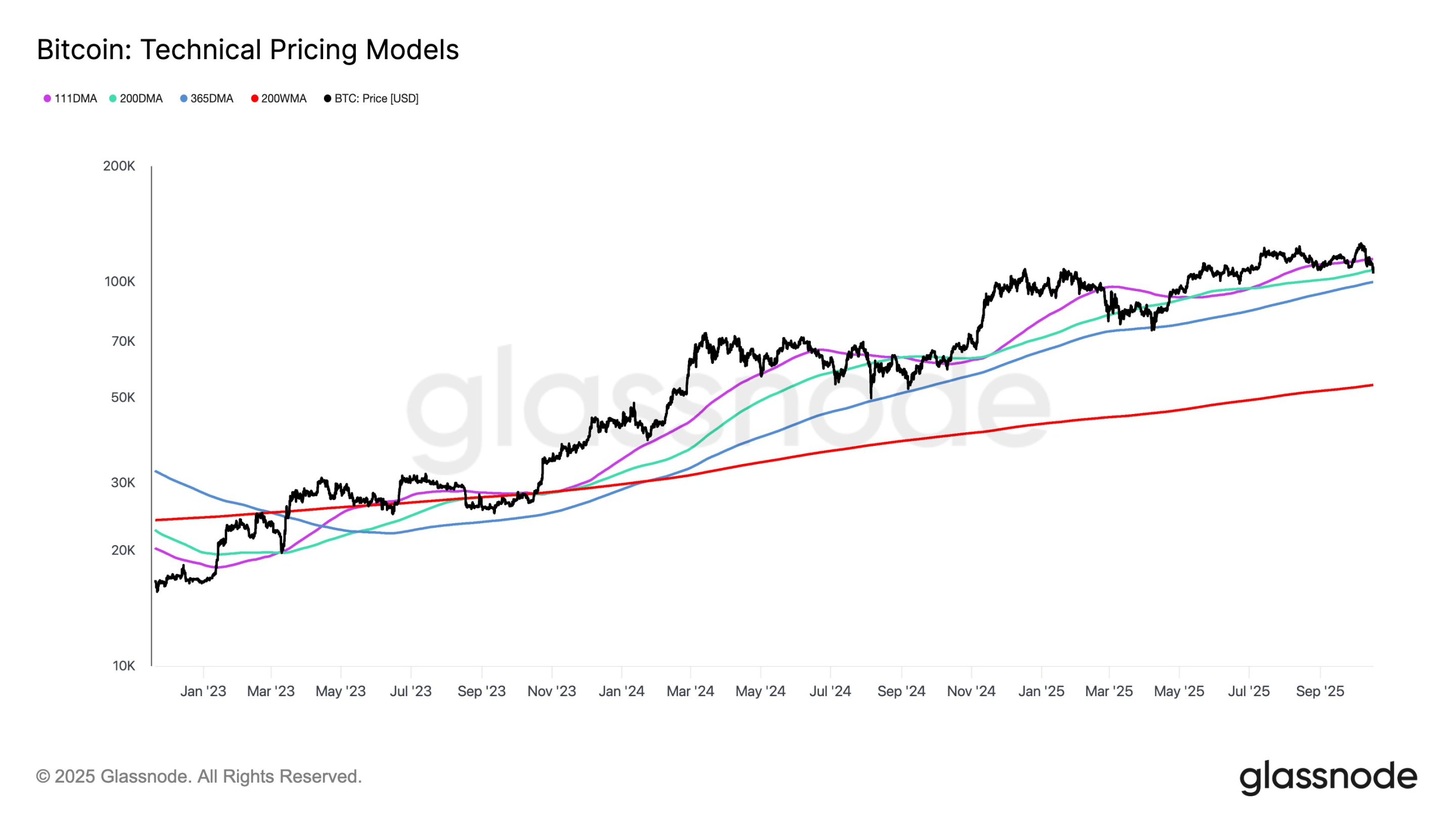
If the 365-day moving average can be held, the trend may stabilize; if it falls below this level, there may be a risk of a deeper correction.



